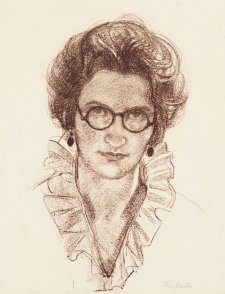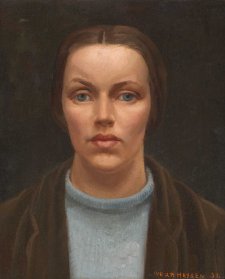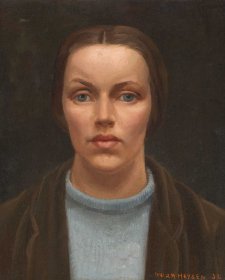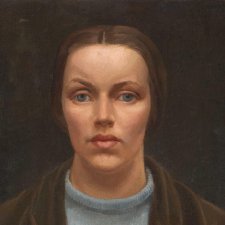Thea Proctor (1879–1966), artist and stylesetter, trained at the Julian Ashton School before leaving Australia for London in 1903. She was to remain there, apart from a visit home in 1912–1914, until after World War One. In her early years in London, she was a friend and model for her fellow Ashton School student, George Lambert, and encountered many of the major figures of the Edwardian art world. When she returned permanently to Sydney in 1921, her art and ideas were at the forefront of contemporary art and design in Australia; her authoritative opinions on decoration, colour, interior design, flower arrangement, ballet and fashion were widely published in new journals such as The Home (for which she designed many covers) and Art in Australia. An exhibitor in the watershed Burdekin House exhibition in 1929, she was a mentor and champion for young interior designers including Marion Hall Best. Although she maintained a large and varied circle of friends (and adversaries), she was a lifelong singleton, living very frugally in rented accommodation, making a slender living from drawing classes, periodic exhibitions at the Macquarie Galleries and commissioned drawings of Eastern Suburbs children. The National Portrait Gallery's 2005 exhibition The World of Thea Proctor, curated by Sarah Engledow and Andrew Sayers, was the first large-scale survey of Proctor's work in all mediums and periods; the publication that accompanied the exhibition, with a foreword by Barry Humphries, comprises the first extended biography of the artist.
Portraits
Self portrait 1921
Thea Proctor Thea Proctor age 42
Thea Proctor c. 1896
an unknown artist Thea Proctor age 17



Thea Proctor
Recorded 1961



Give me five
National Portrait Gallery director Karen Quinlan AM nominates her quintet of favourites from the collection, with early twentieth-century ‘selfies’ filling the roster.



The real Thea
Long after the portraitist became indifferent to her, and died, a beguiling portrait hung over its subject.
Show all 4 Portrait magazine articles




